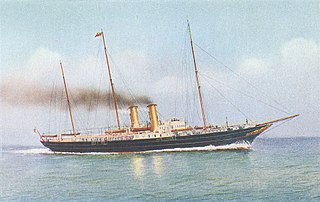 W
WHMY Alexandra was a steamship built as a British royal yacht, completed in 1908. Normally transporting Britain's royal family to European ports, Alexandra served as a hospital ship during the First World War. After 17 years of British service, she was sold to Norwegian commercial interests in 1925. Renamed Prins Olav, she was first used as a luxury cruise ship on trips to the North Cape, she was converted to take more passengers and cargo. In 1937 she began sailing as a Hurtigruten passenger/cargo ship along the coast of Norway. After being requisitioned by the Norwegian government following the 9 April 1940 German invasion of Norway, she transported troops for the Norwegian war effort. Prins Olav was sunk by German bombers on 9 June 1940, while attempting to escape to the United Kingdom as the Norwegian Campaign was coming to an end.
 W
WSS Anglia was a steam ship requisitioned for use as a hospital ship during the First World War. On 17 November 1915 she hit a mine laid by the German U-boat, UC-5.
 W
WRMS Aquitania was a British ocean liner of the Cunard Line in service from 1914 to 1950. She was designed by Leonard Peskett and built by John Brown & Company in Clydebank, Scotland. She was launched on 21 April 1913 and sailed on her maiden voyage from Liverpool to New York on 30 May 1914. Aquitania was the third in Cunard Line's grand trio of express liners, preceded by RMS Mauretania and RMS Lusitania, and was the last surviving four-funnelled ocean liner. Shortly after the Royal Mail Ship Aquitania entered service, World War I broke out, during which she was first transformed into an auxiliary cruiser before being transformed into a troop transport and a hospital ship, notably as part of the Dardanelles Campaign.
 W
WHMHS Asturias was a Royal Mail Steam Packet Company ocean liner that was built in Belfast in 1908 and scrapped in Japan in 1933. She was a Royal Mail Ship until 1914, when on the eve of the First World War the Admiralty requisitioned her as a hospital ship.
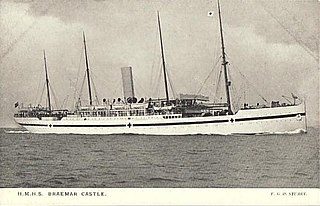 W
WHMHS Braemar Castle was a hospital ship which served with the Royal Navy in the First World War, as well as serving as a troop ship in the Second Boer War and the Greco-Turkish War.
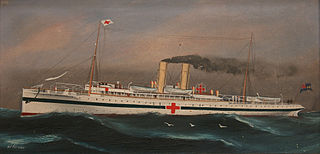 W
WBrighton was a 1,384 GRT steamship which was built in 1903 for the London, Brighton and South Coast Railway and London and South Western Railway. She passed to the Southern Railway on 1 January 1923. In 1930, she was sold to W E Guinness and converted to a private yacht, Roussalka. She was wrecked at Killary Bay on 25 August 1933.
 W
WHMHS Britannic was the third vessel of the White Star Line's Olympic class of steamships and the second White Star ship to bear the name Britannic. She was the fleet mate of both the RMS Olympic and the RMS Titanic and was intended to enter service as a transatlantic passenger liner.
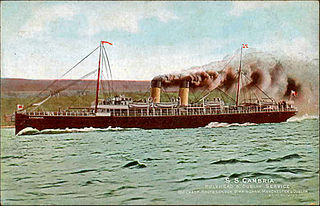 W
WTSS Cambria was a twin screw steamer passenger vessel operated by the London and North Western Railway from 1897 to 1923.
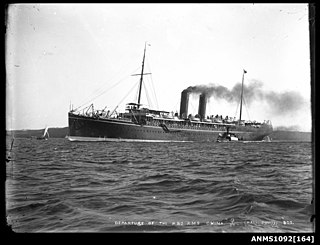 W
WHMHS China was a hospital ship that served with the Royal Navy during the First World War. She was launched in 1896 for P&O as RMS China from Harland and Wolff in Belfast.
 W
WDieppe was a steam passenger ferry that was built in 1905 for the London, Brighton and South Coast Railway. She was requisitioned during the First World War for use as a troopship and later as a hospital ship HMS Dieppe, returning to her owners postwar. She passed to the Southern Railway on 1 January 1923. In 1933 she was sold to W E Guinness and converted to a private diesel yacht, Rosaura. She was requisitioned in the Second World War for use as an armed boarding vessel, HMS Rosaura. She struck a mine and sank off Tobruk, Libya on 18 March 1941.
 W
WHMHS Dover Castle was a steam ship originally built for the Union-Castle Line, but requisitioned for use as a British hospital ship during the First World War. On 26 May 1917 she was torpedoed by German U-boat UC-67.
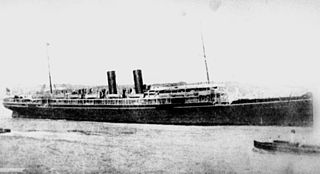 W
WSS Egypt was a P&O ocean liner. She sank after a collision with Seine on 20 May 1922 in the English Channel. Two hundred fifty-two people were rescued from the 338 passengers and crew aboard at the time. A subsequent salvage operation recovered most of the cargo of gold and silver.
 W
WHS Elektra, formerly known as SS Elektra, was a Hungarian steamship launched in 1883. In 1914, she was requisitioned into the Austrian-Hungarian Army to be used as a hospital ship. She was from then on called HS Elektra
 W
WRMS Empress of India was an ocean liner built in 1890-1891 by Naval Construction & Armaments Co, Barrow-in-Furness, England for Canadian Pacific Steamships. This ship would be the first of two CP vessels to be named Empress of India, and on 28 April 1891, she was the very first of many ships named Empress arriving at Vancouver harbor.
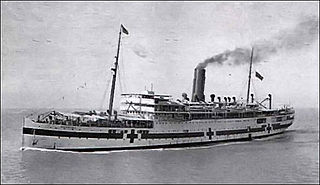 W
WSS Erinpura was a passenger liner built for the British-India Steam Navigation Company in 1911. She was the first British India ship built for Eastern service to be fitted with radio. She was sunk in the Mediterranean during World War II.
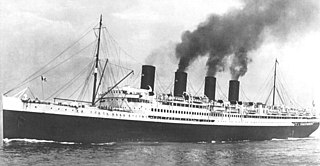 W
WSS France was a French ocean liner which sailed for the Compagnie Générale Transatlantique, colloquially known as CGT or the "French Line". She was later christened Versailles of the Atlantic, a reference to her décor which reflected the famous palace outside Paris. Ordered in 1908, she was introduced into the Transatlantic route in April 1912, just a week after the sinking of RMS Titanic, and was the only French liner among the famous four-funnel liners. France quickly became one of the most popular ships in the Atlantic. Serving as a hospital ship during World War I, France would have a career spanning two decades. Her overall success encouraged CGT to create even larger liners in the future.
 W
WSS Galeka was a steam ship built in 1899 for the Union-Castle Mail Steamship Company by Harland and Wolff. She was launched on 21 October 1899 and completed on 23 December 1899. Later she was requisitioned for use as a British troop transport and then a hospital ship during the First World War. On 28 October 1916 she struck a mine laid by the German U-boat UC-26.
 W
WHMHS Garth Castle was a hospital ship which served with the Royal Navy during the First World War. Built in 1910 as a passenger liner for the Union-Castle Line, she was commissioned as a hospital ship on 4 November 1914, with a capacity of roughly 250 casualties. The ship took part in the North Russia Intervention in 1918–19.
 W
WHMHS Glenart Castle was a steamship originally built as Galician in 1900 for the Union-Castle Line. She was renamed Glenart Castle in 1914, but was requisitioned for use as a British hospital ship during the First World War. On 26 February 1918, she was hit and sunk by a torpedo fired from the German U-boat UC-56.
 W
WHMHS Gloucester Castle was a steam ship originally built for the Union-Castle Line, but requisitioned for use as a British hospital ship during the First World War. On 30 March 1917 she was torpedoed by German U-boat UB-32. She was, however, salvaged, and returned to civilian service after the war. She was sunk by the German commerce raider Michel in 1942 off Ascension Island in the South Atlantic.
 W
WHMAS Grantala was a hospital ship operated by the Royal Australian Navy (RAN) during World War I. She was launched in 1903 by Armstrong Whitworth Company for the Adelaide Steamship Company. The ship operated in Australian waters from 1903, and was requisitioned by the RAN on 7 August 1914. She was returned to her owners in 1915, then was sold and renamed Figuig. The ship was scrapped in 1934.
 W
WThe SS König Albert was a German Barbarossa class ocean liner owned by the Norddeutscher Lloyd Line. Interned in Italy at the outbreak of World War I, she was seized by the Italian Government in 1915 and converted to a hospital ship. Sold into merchant service in 1920, she was used as a transport for the Italian Navy, before being scrapped in 1926.
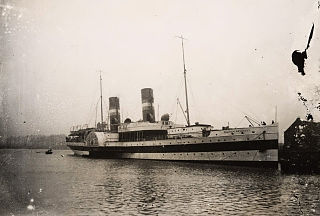 W
WHS Koningin Regentes was a Dutch hospital ship that was torpedoed by the Imperial German Navy submarine SM UB-107 on 6 June 1918 while returning to Rotterdam, the Netherlands, from Boston, Lincolnshire, England.
 W
WHMHS Lanfranc was an ocean liner requisitioned as a hospital ship in the First World War. On 17 April 1917 she was torpedoed by the German U-boat SM UB-40.
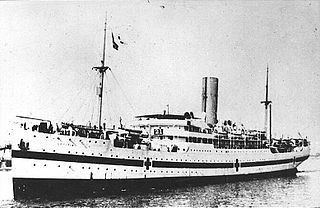 W
WHMHS Letitia was a British hospital ship that ran aground at Portuguese Cove in Halifax Harbour, Canada on 1 August 1917 while carrying 546 wounded Canadian soldiers from Liverpool, United Kingdom to Halifax, Nova Scotia, Canada.
 W
WDuring the First World War, many hospital ships were attacked, both on purpose or by mistaken identity. They were sunk by either torpedo, mine or surface attack. They were easy as well as tragic targets, since they carried hundreds of wounded soldiers from the front lines.
 W
WHMHS Llandovery Castle, built in 1914 in Glasgow as RMS Llandovery Castle for the Union-Castle Line, was one of five Canadian hospital ships that served in the First World War. On a voyage from Halifax, Nova Scotia to Liverpool, England, the ship was torpedoed off southern Ireland on 27 June 1918. The sinking was the deadliest Canadian naval disaster of the war. 234 doctors, nurses, members of the Canadian Army Medical Corps, soldiers and seamen died in the sinking and subsequent machine-gunning of lifeboats. Only 24 people, the occupants on a single life-raft, survived. The incident became infamous internationally and was considered, after the Armenian Genocide, as one of the war’s worst atrocities. After the war, the case of Llandovery Castle was one of six alleged German war crimes prosecuted at the Leipzig trials.
 W
WSS Maheno was an ocean liner belonging to the Union Company of New Zealand that operated in the Tasman Sea, crossing between New Zealand and Australia, from 1905 until 1935.
 W
WThe SS Marama was an ocean liner belonging to the Union Company of New Zealand from 1907 to 1937. It was a hospital ship in WWI as His Majesty's New Zealand Hospital Ship No. 2.
 W
WItalian hospital ship Marechiaro was a steam ship originally built by an Italian shipping company, but requisitioned for use as an Italian hospital ship during the First World War. On February 21, 1916 she was sunk near the Albanian port of Durrës by a mine laid by the German U-boat UC-12. British drifters Hasting Castle and Selina saved 104 men from the water while 33 were killed. Other sources mention over 200 casualties.
 W
WRMS Mauretania was an ocean liner designed by Leonard Peskett and built by Wigham Richardson and Swan Hunter for the British Cunard Line, launched on the afternoon of 20 September 1906. She was the world's largest ship until the completion of RMS Olympic in 1911. Mauretania became a favourite among her passengers. She captured the Eastbound Blue Riband on her maiden return voyage in December 1907, then claimed the Westbound Blue Riband for the fastest transatlantic crossing during her 1909 season. She held both speed records for 20 years.
 W
WThe Ophelia was a steamship originally built by a German shipping company, but requisitioned for use as a hospital ship by the Imperial German Navy during the First World War. After being viewed acting suspiciously, the Ophelia was boarded on 17 October 1914 and seized by the Royal Navy for violating Hague Convention X of 1907 concerning hospital ships.
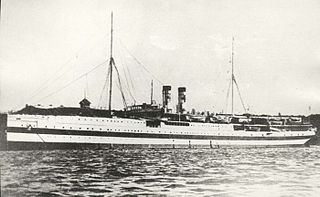 W
WThe SS Portugal was a steam ship originally built by a French shipping company, but requisitioned for use as a Russian hospital ship during the First World War. On March 30 [O.S. March 17] 1916 she was sunk by a torpedo from the German U-boat U-33.
 W
WHMHS Rewa was a steamship originally built for the British-India Steam Navigation Company for their mail and passenger service but requisitioned in August 1914 and fitted out for use as a British hospital ship during the First World War. On 4 January 1918, she was hit and sunk by a torpedo from the German U-boat U-55.
 W
WRohilla was a passenger steamer of the British India Steam Navigation Company which was built for service between the UK and India, and as a troopship. After becoming a hospital ship in the First World War, Rohilla ran aground in October 1914 near Whitby with the loss of 83 lives.
 W
WHMHS Salta was a steam ship originally built for Société Générale de Transport Maritime Steam, but requisitioned for use as a British hospital ship during the First World War. On 10 April 1917 she hit a mine laid by the German U-boat UC-26.
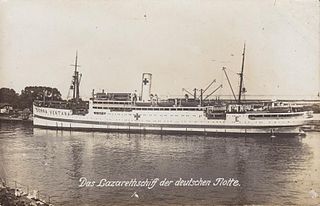 W
WSierra Ventana was a steam ship originally built for North German Lloyd in 1912, but requisitioned for use as a hospital ship during the First World War. She was then given to France as war reparations and sailed under two further names before being scrapped in 1936.
 W
WUSS Surf (SP-518) was a steam yacht that was offered to the United States Navy in 1917 but was never accepted.
 W
WHS Tabora was a German hospital ship that was sunk on 26 March 1916 in the port of Dar es Salaam, German East Africa, by the Royal Navy battleship HMS Vengeance and protected cruisers HMS Challenger and HMS Hyacinth, and the Royal Australian Navy light cruiser HMAS Pioneer.
 W
WSS Tirol was a Austro-Hungarian hospital ship that was mined in the Adriatic Sea off Durazzo on 16 April 1916 but was salvaged and returned to service later that year. The ship was scrapped sometime in 1929 after being handed over to Italy.
 W
WHS Vpered was a Russian hospital ship that was torpedoed by the Imperial German Navy submarine SM U-38 on 8 July 1916.
 W
WSS Wandilla was a steamship built in 1912 for the Adelaide Steamship Company. The ship operated on the Fremantle to Sydney run until 1915, when she was acquired for military service and redesignated HMAT Wandilla. Initially used as a troop transport, the vessel was converted to a hospital ship in 1916. Wandilla was returned to her owners at the end of the war, then was sold to the Bermuda & West Indies SS Company and renamed Fort St. George in 1921. She was sold in 1935 to Lloyd Triestino and renamed Cesarea before being renamed Arno in 1938. At the start of World War II, the ship was acquired by the Regia Marina for use as a hospital ship. She was sunk by British aircraft on 10 September 1942.
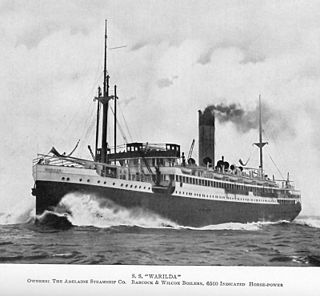 W
WHMAT Warilda was a 7713-ton vessel, built by William Beardmore and Company in Glasgow as the SS Warilda for the Adelaide Steamship Company. She was designed for the East-West Australian coastal service, but following the start of the First World War, she was converted into a troopship and later, in 1916, she was converted into a hospital ship.